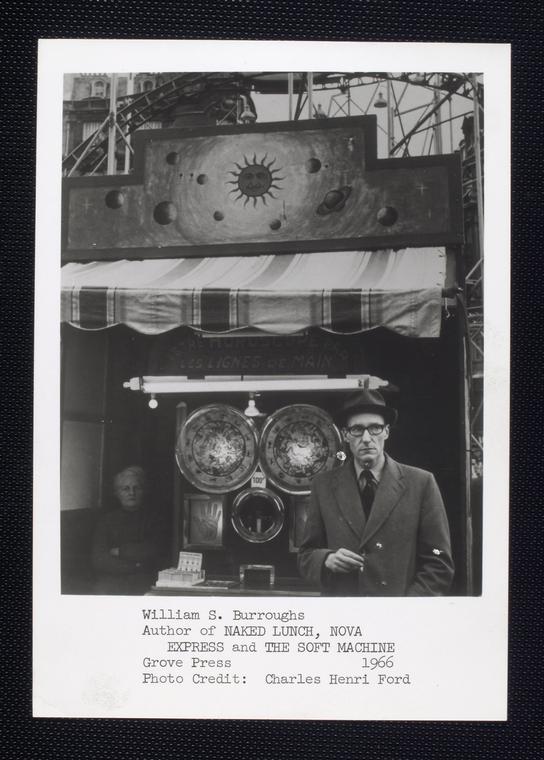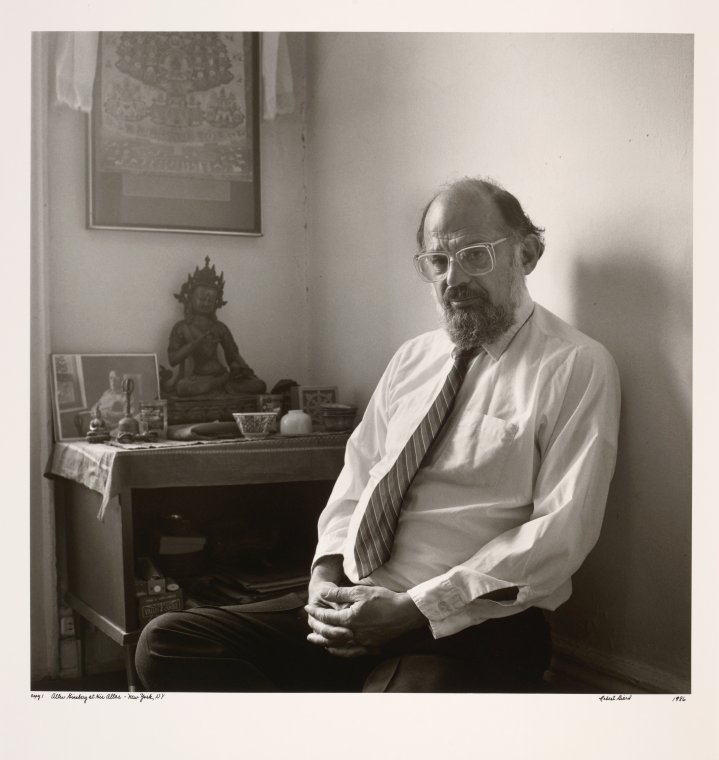Biblio File
Burroughs at the Berg

The archive is a swirl of 1960s political, popular and literary culture, offering a close look at a cross-section of social revolutions that caught fire in the late fifties and sixties, including the rise of drugs, the gay liberation movement, free speech and the development of Scientology. Here too, are many of the era’s most innovative artists, thinkers and experimental writers. Burroughs's correspondents include Paul Bowles, Mary Beach & Claude Pelieu, David Budd, Truman Capote, Gregory Corso, Brion Gysin, Allen Ginsburg, Rolf Gunter-Dienst, Lawrence Fehrlinghetti, Charles Henri Ford, Timothy Leary, Jack Kerouac, David Prentice and Terry Southern. Also present is extensive correspondence with noted publishers Dick Seaver and Barney Rossett of Grove Press and Maurice Girodias of Olympia Press.
The archive offers an extensive record of the evolution of Burroughs’s cut-up method, wherein the author cut-up and randomly arranged fragments of text to create arbitrary phrases. Burroughs viewed the cut-up method as a corrective to the exertion of conscious thought on language, and saw it as a way to create texts that were fresh and spontaneous. Using this method, Burroughs created his “word horde”, a collection of texts from which he drew to create the novels Naked Lunch, The Ticket that Exploded, and Soft Machine (the archive devotes several folders to each, along with folders devoted to the word horde alone). Extensive correspondence with the painter Brion Gysin, who introduced Burroughs to his own visual cut-ups in Paris at the Beat Hotel in 1959 and inspired Burroughs to apply the method to texts, is instructive on technique and practice. Drafts and correspondence related to their book, The Third Mind, can also be found here.
Burroughs plays with images using the cut-up technique as well; the archive is rich in photographs of photographs, typescripts and newspaper clippings taken by Burroughs himself that he cut-up and rearranged. Cut-up letters written to his mother, brother and son, as well as to Gysin, Paul Bowles and other friends corroborate that Burroughs was experimenting with the technique in all facets of his writing.
In letters to Gysin, Ginsburg and Bowles in the archive, Burroughs’s literary philosophy begins to emerge. Correspondence between the nomadic Ginsburg and Burroughs is as rich and far-flung in the territory each covered in their travels. Ginsberg writes fizzy, dense letters that zigzag from topic to topic in much the same fashion that his poetry leaps. The poet furnishes his letters with vivid travelogue accounts of travels in Benares, Chile, and Calcutta, and with bird’s eye views of Greenwich Village in the fifties and sixties (Ginsberg likens the terrain to Asian landscape watercolors, but his downtown apartments are jumpy, desperate places for strivers on Mescaline). In turn, Burroughs writes fascinating letters unraveling the cut-up technique. Cut-ups, he tells Ginsburg, are funny. He prescribes mixing the technique with yagé (a hallucinogenic vine, used for spiritual practice in Columbia by Amazonian peoples, and later the subject of Burroughs and Ginsberg’s Yage Letters). Amongst the post that Burroughs received is a holograph draft of Ginsburg’s “Kaddish”, signed by his friend.

Burroughs, Gysin and Miles organized the material into 169 “folios” of thematically-related subjects. Many of Burroughs self-designed archival folios are decorated with his own cover collages and illustrations. Files featuring glyphs, cut-ups, and photographs offer visually compelling material that documents Burroughs’s creative experiments. A series of photographs taken at the Plaza Hotel, “T.V.”, features a collection of television sets glowing in dark hotel rooms, with images of spaghetti western sheriffs and cowboys captured frozen on the screen. In another grouping, “Bill ‘N Blue”, Burroughs bisects photographs of Ian Sommerville, Sitting Bull, and himself. These images appear again in black and white photographs of the photographs, mismatched to create hybrid faces and juxtaposed with cut-up texts and images from newspaper and magazine to create collages.
Also documented in the archive are notes on the Boston obscenity trial of Naked Lunch, the genesis of Big Table, the journal formed by Irving Rosenthal in 1959 in response to the censorship of that work, and extensive files kept by Burroughs documenting the early literature and dogma of Scientology, a movement that initially attracted him before he ultimately dismissed the church as too controlling.
Read E-Books with SimplyE
 With your library card, it's easier than ever to choose from more than 300,000 e-books on SimplyE, The New York Public Library's free e-reader app. Gain access to digital resources for all ages, including e-books, audiobooks, databases, and more.
With your library card, it's easier than ever to choose from more than 300,000 e-books on SimplyE, The New York Public Library's free e-reader app. Gain access to digital resources for all ages, including e-books, audiobooks, databases, and more.
If you don’t have an NYPL library card, New York State residents can apply for a digital card online or through SimplyE (available on the App Store or Google Play).
Need more help? Read our guide to using SimplyE.
